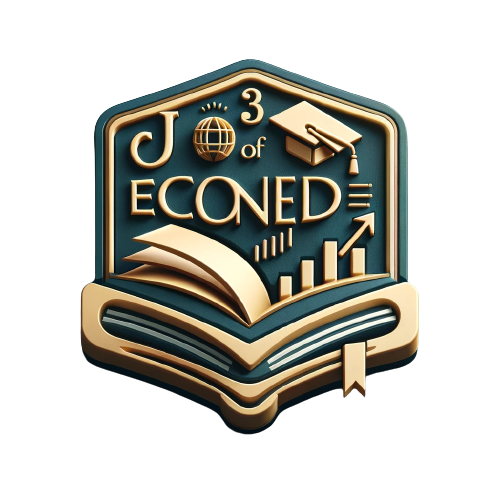Economic education journal
Evaluating Student Performance in Economics
Evaluating student performance in economics demands a rich, multifaceted approach—one that transcends the realm of traditional testing. Sure, quizzes and exams can momentarily illuminate a student’s grasp of material; yet, they often skim over the intricate layers of knowledge and critical thinking prowess essential for truly mastering economic concepts. By weaving in an array of assessment techniques—think project-based learning, case studies brimming with real-world relevance, and insightful peer evaluations—educators can tap into a broader spectrum of competencies. Such methods inspire students to translate abstract economic theories into tangible applications, igniting a deeper engagement with the subject matter.
Moreover, let’s not underestimate the power of continuous feedback in this evaluative dance! It serves as a mirror for students to gaze into their understanding while spotlighting areas ripe for improvement. A blend of regular formative assessments interspersed with summative evaluations offers students robust insights into their performance throughout the course’s arc. And oh—the magic that happens when students engage in self-assessment and peer review! This fosters accountability while cultivating a vibrant collaborative learning atmosphere. Through harnessing diverse assessment strategies intertwined with focused feedback, educators can craft an enriched framework that elevates how we gauge student performance in economics—a dynamic interplay where growth flourishes!
Assessment Techniques for Measuring Understanding
Effective assessment techniques—oh, they are absolutely vital when it comes to gauging students’ grasp of economic concepts! Take formative assessments, for instance. Quizzes and those short reflections? They’re like instant feedback machines, ready to inform educators on the fly! It’s fascinating how these tools can spotlight trouble areas where students might be floundering, enabling teachers to tweak their methods and strategies accordingly.
Now consider other approaches—case studies and project-based assessments. These aren’t just fancy terms; they invite students to leap from theory into the vibrant chaos of real-world applications. This immersion fosters a profound understanding that textbooks alone simply can’t offer!
And then there’s summative assessments—the grand finale! Think examinations and comprehensive projects designed specifically to measure overall learning outcomes at the conclusion of a unit or course. What an array we have here: multiple-choice questions dancing alongside essay responses while practical applications of economic theories strut in as well! By weaving together such diverse assessment formats, educators can paint a fuller picture of student learning. Plus, this variety caters to different learning styles—ensuring every student has their moment in the spotlight to showcase their understanding effectively!
| Assessment Technique | Type | Purpose | Advantages |
|---|---|---|---|
| Formative Assessments | Quizzes, Reflections | Gauge immediate understanding | Instant feedback, identifies trouble areas |
| Project-Based Assessments | Case Studies, Group Projects | Apply theories to real-world scenarios | Deepens understanding, promotes collaboration |
| Summative Assessments | Examinations, Comprehensive Projects | Evaluate overall learning outcomes | Measures cumulative knowledge, diverse formats |
| Diverse Format Assessments | Multiple-Choice, Essays | Cater to varied learning styles | Broad representation of student understanding |
Interdisciplinary Approaches to Economic Education
Merging a tapestry of disciplines into the realm of economic education—what an exhilarating endeavor! It’s like opening a treasure chest brimming with insights from psychology, sociology, political science, and environmental studies. This dynamic fusion not only amplifies students’ grasp of economic concepts but also transforms them into keen navigators through the intricate web of economic phenomena. Imagine the spark in their eyes as they engage deeply, contemplating issues from myriad perspectives!
This interdisciplinary dance doesn’t merely captivate; it ignites critical thinking flames as students dissect real-world applications that breathe life into abstract theories. Consider how a vibrant curriculum can emerge when educators weave in case studies from behavioral economics alongside traditional models—it’s akin to unveiling the hidden threads connecting human behavior to market outcomes!
And let’s not overlook current events—they become fertile ground for rich dialogue when examined through diverse scholarly lenses. Picture lively discussions rippling through classrooms as students ponder the far-reaching implications of economic choices, equipped with knowledge that transcends single-discipline boundaries.
By championing this multifaceted approach to learning, educators are sculpting adept thinkers ready to traverse complex economic landscapes—armed with an enriched understanding that highlights our shared societal interconnections. What a thrilling journey awaits them!
Collaborating with Other Fields to Enrich Learning
Merging disciplines like psychology, sociology, and finance can significantly elevate the learning experience in economics education. When educators peel back the layers of economic concepts through various lenses, they empower students to forge a more nuanced grasp of the subject matter. Take psychological principles, for instance—they unravel fascinating insights into consumer behavior and decision-making maneuvers that often elude traditional teaching methods. This rich tapestry of interdisciplinary exploration bridges theoretical frameworks with tangible real-world applications, igniting critical thinking skills along the way.
Moreover, partnering with fields such as environmental science unveils an even deeper understanding of sustainable economic practices for students. By diving headfirst into discussions about resource management and ecological impact, learners are prompted to contemplate the far-reaching consequences of economic choices—beyond mere numbers on a spreadsheet. These vibrant interdisciplinary connections not only enhance the economic curriculum but also prime students to adopt a holistic perspective when wrestling with complex global dilemmas. In this multidimensional landscape, future economists are armed with essential tools designed to navigate our intricately woven world where everything is interconnected.
Professional Development for Economics Educators
Continuous professional development is not just a luxury but a vital necessity for economics educators aiming to sharpen their teaching prowess and adapt to the ever-shifting terrain of economic theory and practice. Picture this: workshops, seminars, and conferences buzzing with ideas—educators exchanging best practices like fireflies in the night, exploring innovative pedagogical strategies that spark new understandings of complex concepts. This vibrant participation breathes life into a culture steeped in collaboration and knowledge-sharing among educators, ultimately creating ripples that enhance student learning outcomes.
But wait! The digital age has opened up an expansive treasure trove of online resources—from webinars bursting with fresh insights to instructional materials tailored for diverse learning needs. This plethora allows educators to tailor their training journeys at their own pace, diving deep into contemporary economic issues that resonate with today’s world. Imagine integrating these relevant topics into lessons—transforming dry lectures into dynamic discussions that captivate students’ imaginations! By committing themselves to lifelong learning, economics educators arm themselves not only against classroom challenges but also become catalysts who inspire the next wave of brilliant economists ready to tackle tomorrow’s complexities.
Workshops and Resources for Continuous Improvement
Opportunities for professional development among economics educators are like golden keys, unlocking doors to enhanced teaching prowess. Imagine workshops that buzz with excitement, where innovative pedagogical strategies and the latest economic theories collide in a whirlwind of ideas! Instructors dive deep into these sessions, unearthing valuable insights that can transform their classrooms. The atmosphere crackles with the energy of peer collaboration; educators exchange best practices and rich experiences as if they’re artists sharing strokes on a collective canvas.
But wait—there’s more! The treasure trove of resources available is nothing short of astonishing. Online platforms explode with an abundance of materials: research articles that challenge conventional wisdom, case studies shedding light on real-world complexities, and interactive teaching tools designed to captivate students’ imaginations. These gems empower educators to weave contemporary economic issues seamlessly into their curricula, keeping lessons fresh and engaging.
And let’s not forget about the magic that happens when educators connect through forums and conferences! Networking unfolds like a tapestry woven from shared aspirations—a communal space where growth flourishes and knowledge flows freely. This vibrant exchange is vital for propelling the field forward, ensuring that every educator has access to the collective wisdom necessary to thrive in this dynamic landscape.
- Professional workshops offer hands-on experience with innovative teaching techniques.
- Access to a wealth of online resources enhances curriculum development.
- Regular networking events foster collaboration among economics educators.
- Forums provide a platform for sharing challenges and solutions.
- Case studies help bridge the gap between theory and real-world applications.
- Interactive teaching tools encourage student engagement and curiosity.
- Continuous improvement efforts are essential for adapting to the evolving educational landscape.
Trends in Economic Education Research
In the ever-evolving landscape of economic education, a fascinating shift is underway—one that embraces innovative teaching methodologies designed to unravel the intricate tapestry of complex concepts for students. A striking trend has emerged: the infusion of technology into classrooms, which fosters immersive and interactive learning experiences through simulations and dynamic online platforms. This transformation not only captivates an array of learning styles but also equips students for a burgeoning digital economy, catalyzing critical thinking skills while grounding them in real-world applications of economic theories.
Moreover, there’s an escalating recognition of the necessity to evaluate student outcomes comprehensively. Educators are delving into formative assessments that provide continuous feedback loops—a fluid approach allowing instructional strategies to morph and adapt as needed. This movement beckons collaboration among education researchers, urging them to craft reliable assessment tools that effectively measure economic literacy while guiding curricular adjustments aimed at meeting rigorous educational standards. The interplay between these elements creates a vibrant dialogue about how we teach—and learn—in this complex world.
Current Topics and Areas of Exploration
An intriguing wave of interest is sweeping through the realms of education, particularly in how behavioral economics can be woven into the very fabric of learning frameworks. This dynamic approach shines a spotlight on those elusive psychological factors that shape our economic choices—fascinating, isn’t it? Scholars are delving deep into this uncharted territory, seeking to uncover ways in which students might unravel complex economic ideas through real-world applications and case studies that mirror their everyday behaviors. It’s not just about memorization; it’s about tapping into varied learning styles and igniting critical thinking like never before.
Meanwhile, digital literacy has rocketed to prominence within the sphere of economic education. As technology evolves at breakneck speed, there’s an urgent call to arm students with the tools they need to navigate this vast online landscape proficiently. We’re talking about evaluating digital resources that enhance comprehension of economic principles—think interactive simulations and sophisticated data analysis platforms! By scrutinizing how effective these technologies truly are, we glean crucial insights aimed at cultivating a more skilled and informed generation of learners ready to tackle tomorrow’s challenges head-on.
Future Directions for Economic Education Journals
The realm of economic education is in a state of exhilarating flux, propelled by the relentless tide of technological innovation and the shifting demands of society. In this vibrant landscape, journals dedicated to this field must not merely adapt—they must revolutionize their approach to teaching methods and evaluation techniques! The spotlight on digital literacy, data analytics, and weaving real-world economic dilemmas into academic frameworks will become absolutely paramount.
But wait—there’s more! Collaborative research that transcends traditional disciplinary boundaries will emerge as a cornerstone for shaping the future narrative within these publications. Imagine educators and researchers forming dynamic networks—a thriving community where best practices are shared like prized secrets!
As we look ahead, it’s imperative that these journals embrace an array of voices and approaches that mirror our interconnected world; after all, economics knows no borders. With new challenges looming on the horizon for economic education, fostering ongoing conversations about innovative teaching strategies and curriculum design will undoubtedly amplify the significance and influence of scholarly contributions in this ever-evolving field. Buckle up—the journey is just beginning!
Adapting to the Evolving Landscape of Economics Education
The realm of economic education is in the throes of a remarkable metamorphosis, driven by the relentless march of technology and shifting student demographics. Picture this: digital tools weaving themselves into the fabric of curricula, sparking engagement like never before, and opening up a treasure trove of learning opportunities tailored to myriad styles. It’s as if virtual simulations and online resources are crafting bridges—bridges that span the often daunting gulf between abstract theories and their tangible counterparts in the real world. And let’s not overlook the magic that happens when educators from disparate disciplines come together; their collaboration doesn’t just enrich understanding—it cultivates an educational experience that’s nothing short of holistic.
In light of this pressing demand for teaching methods that bend and flex with students’ needs, educators are embracing innovative pedagogical strategies with gusto. Flipped classrooms! Experiential learning! These approaches don’t just hand over control to students—they empower them to steer their own educational journeys while honing critical analytical skills along the way. But there’s more: staying attuned to emerging trends in economics isn’t merely beneficial—it’s essential! As globalization, sustainability, and social justice weave through modern economic discourse, teachers must explore how these elements reshape theories and practices alike. Continuous professional development emerges as a vital lifeline for educators navigating this evolving landscape—arming them with insights necessary to equip students with skills primed for success in an ever-changing economy.
Conclusion
As the terrain of economic education morphs and shifts, it’s becoming ever more crucial for educators to seize upon novel strategies and interdisciplinary methods. Imagine a tapestry woven from diverse threads—insights and techniques borrowed from various realms—that economics instructors can utilize to craft an enriched, vibrant learning atmosphere. This approach not only deepens students’ grasp of intricate economic theories but also primes them to critically engage with the multifaceted issues that populate our world.
But wait! The journey doesn’t end there; ongoing professional development stands as a cornerstone for educators eager to keep pace with this fluid field. Picture workshops brimming with cutting-edge research trends and savvy assessment strategies—these are not mere resources, but lifelines that empower teachers with essential tools aimed at nurturing student achievement. By emphasizing these critical facets, we arm the domain of economic education to better equip budding economists as they navigate—and indeed contribute to—the swirling currents of an ever-evolving global economy.







